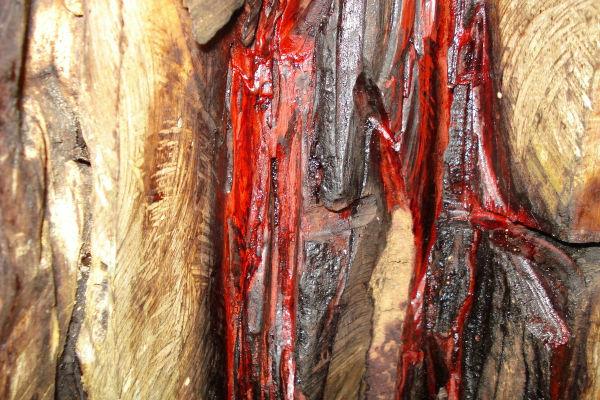War of Two Roses is the name of a series of battles that took place between 1455 and 1487 in England between the House of Lancaster and the House of York, both descendants of the king. Edward III and who claimed the English throne. the denomination war of two roses it happened because both sides of the dispute wore shields with roses to represent their dynasties. You Lancaster wore a red rose and the York White.
In addition to the common descent, the conflict was justified by the economic deprivations experienced and the loss of territory to France, which were bitterly caused by England after theHundred Years War.
Three decades were marked by intense violence in England in which the crown alternated between the two houses and the nobility weakened. Among the outstanding points of the dispute is the fact that King Richard II died without leaving an heir. He had been deposed and murdered by Henry IV of the House of Lancaster. Eduard III also fathered the descendants of the house of York.
Causes
King Edward III (1312 - 1377) had four children: Edward the Black Prince (heir to the throne), Lionel of Antwerp (Duke of Clarence), John of Gaunt (Duke of Lancaster) and Edmund of Langley (Duke of York). Edward the Black Prince died in 1376, victim of the Black Death and grandson Richard became king at the age of 10 years old. Faced with the king's inability to rule, his uncle Duke of Lancaster took control of the country.
However, Richard II grew up, rebelled against his uncle and made conflicting decisions. In 1399, John of Gaunt died and Richard II confiscated the land he had owned. John of Gaunt's son Henry raised an army and when Richard II surrendered he assumed the throne as Henry IV. Richard was arrested and died mysteriously in February 1400.
Not being the natural successor of Richard II, Henry IV faced several challenges on the throne. Through the line of succession, the crown was to pass to Edmund Earl, who was the great-grandson of Lionel Duke of Clarence. Still, Henry IV remained on the throne and died in 1413, when his son Henry V was crowned.
This invades France after an episode of conspiracy, marries the French princess under the agreement that the children would be heirs of the two kingdoms. Henry V dies in 1422 and his son Henry VI is crowned King of England and France. The French throne, however, was restored.
Read more about Joana D'arc
Henry VI stars in episodes of madness and his ability to govern is put to the test. He is considered weak and dominated by his wife, the French Margarida de Anjou. Due to the king's hiatuses, responsibilities for the government of England in 1454 rested with Richard, the Duke of York, who refuses to leave power after Henry VI regained his sanity in 1455, starting the battles called “War of Two Roses”.
battles
First Battle of St. Albans. In 1455, the Duke of York leads around 3,000 men on a march towards London and is victorious. At least 300 people die. The queen and son Edward flee into exile and the king is arrested.
Battle of BloreHeath, 1459. It results from the pressure of Margarida de Anjou on King Richard III, who joins forces and decides to anticipate the attack, but loses the fight.
Battle of Ludford, 1459. The York House makes a new onslaught. This time, the regroups advance towards Worcester, but fall when they are met by the army led by Henry VI. There are significant numbers of deserters between the York House army and Richard III flees to France.
Battle of Northampton. In June 1460 another bloody battle begins with victory for House York, which assumes the crown. The Queen via to Wales, where she remounts the army.
Battle of WakefieldAs early as 1460, Richard III travels to contain the Lancaster army, but dies during the battle. Her son is also captured and executed.
Battle of the Cross of Mortimor, 1461. This time Edward, Earl of March, son of Richard III, faces the Lancaster house and wins.
Second Battle of St. Albans, February 17, 1461. After another battle, King Henry VI is captured.
Battle of Ferrybridge and Towton, March 28, 1461. After proclaiming himself king, Edward, who becomes known as Edward IV, again faces House Lancaster. King Henry VI, the queen and her son flee to Scotland where they remain for nine years. Edward IV is crowned King at Westminster and remains in power until 1483.
Battle of Hedgeley Moor, 1464. An attempt at peace comes from the York, but is refused by House Lancaster and there is another bloody battle, this time in Scotland.
Battle of Hexham. The leaders of House Lancaster are executed. In 1465 Edward IV imprisons Henry VI. The facts are followed by a series of events not anticipated by the York House. One of King Edward IV's supporters, Warwick starts to claim more space and control within the kingdom, claiming that he was of fundamental importance to the consolidation of the kingdom.
Faced with the monarch's refusal, Warwick joins the King of France, Louis XI. Family arrangements and marriages also come to strengthen Casa Lancaster. Among the marriages is that of Margaret York, who in 1468 marries Charles the Bold of France.
Edgecote Moor Battle, 1469. It took place after eight years of the reign of Edward IV and is marked by the king's concern with the alliances made by Warwick. Defeated, Edward IV watches Henry VI return to the throne.
Battle of Losecote Field, March 12, 1470. This time, after defeating Henry VI's troops, Edward IV returns to the throne, which forces Warwick to flee to France. In 1471, after the Battle of Barnet, Warwick is killed, as is Henry VI. In 1474, Edward IV allies with Charles the Bold and invades France for his protection. King Edward IV dies in 1483.
The King had two sons, Edward and Richard, but both were too young to rule and so Richard, Duke of Gloucester, ruled England. Richard is accused of sending the two princes to the Tower of London and murdering them in the summer of 1483.
Thus, Richard was crowned Richard III. He was not a popular king and faced many challenges for his place on the throne, notably from Henry Tudor, grandson of Owen Tudor.
Battle of Stoke, 1485. Henry Tudor, leading House Lancaster's army, kills Richard III. Henry Tudor marries Edward IV's daughter Elizabeth of York, putting an end to the movement called the War of the Roses and starting the Tudor dynasty.
See too: Henry VIII


